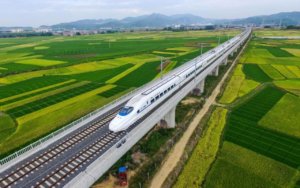Using Project Appraisal procedures to justify projects
by Conall Mac Aongusa, Transport Planner, 24/6/2019
Very recently I met an eager and committed transport engineer who had a very good proposal for a new commuter rail line in a medium-sized city. He explained very well the merits of the engineering design and the quality of the technical solution. However, he complained about not being able to get approval for funding to implement the project. He said that the problem he faced was that he is told by his bosses there is no money available or at other times the problem he faces is that he cannot get approval for moving the project beyond the design stage.
Any major (or minor) engineering project requires funding and investment for implementation so the fundamental problem for the transport engineer is not technical. It is about convincing the decision makers to give him the funds!

The levels of investment for railways and major transport projects are large often running into millions of dollars. Their physical and environmental impacts will be likely significant and will be long lasting. For example, to build a new 20km railway line will cost millions of dollars to construct and it will have a major physical impact on the urban or rural landscape lasting for over 100 years or more. So before deciding to commit funding it is important for the decision maker (ie the person or authority which allocates the money) to be sure that it is worth it. They need to take into account all the costs as well as all the benefits. There may be alternative choices competing for the investment funding – for example, it could be spent on another railway line elsewhere or on a roads project. It may be the case that the funding could be better used in building local health or educational facilities.
When proposing a transport project for implementation, you are in fact making a request for investment funds and resources. It is the responsibility of the project engineer or manager to make the case as to why it is better to invest in one project rather than in another one or in another place.
To make the best case it is important to understand how these funding decisions are made, who is the ultimate decision maker and to understand the context in which the decision is made. So, we should distinguish between the perspective of the funder or decision maker, the perspective of the project promoter or engineer as well as the context of the proposal at an organisational level, at a political level and at a public level.
For example, in the public or government sector the ultimate decision makers are the politicians who decide on the priority of allocation of funding to each sector – whether it’s transport, health, education or tourism. In many governments the criteria and decision-making process relating to allocating of funds to new capital investment projects is made clear by the Ministry of Finance. It is simple good practice in the management of public funds that other Ministries follow these rules.
These procedures are commonly called Project Appraisal and Evaluation systems and they provide the clarity and consistency of decision making about allocating of funding for projects across government. They ensure that project proposals in different sectors can be considered in a consistent and similar manner. Starting more than 40 years ago, project appraisal systems were based on economic theories about the distribution of benefits and allocation of resources. Over time it became clear that a strict economic approach was too limiting for good decision making. Social and Environmental considerations are increasingly being taken into account although this requires more detailed and complex justification procedures.
It is important to have a clear appraisal process that allows all stakeholders involved in the project to understand how and why the decisions are made and which allowed them to contribute their feedback and concern about the options and choices. This increases the likelihood in getting the agreement from each stakeholder and it reduces the chances that they will object to or delay the approval of the project at any stage which may hold up or jeopardize the funding.
The traditional approach used by engineers is very good at identifying technical solutions to specific problems and hence it known as a “solution-driven approach”. Because an appraisal process takes a wider view of all the considerations necessary to invest public funds, the technical approach to solving the problem must be tested against a wide series of questions – such as what exactly is the problem being solved by the project? Is this part of a wider economic or social problem? what other approaches can be taken to solve the problem?
The approach of the funders and decision makers is that of an investor – why should I invest here and what are the benefits and what are the costs? How does this proposal assist in achieving the high-level policy goals and objective? It is useful to consider this type of decision making as a “policy-driven approach”.
In an era of smartphones and social media there is greater public awareness of public decision making in all countries across the globe. Decision makers are aware about paying attention to the new online channels of communication to hear contributions and counter arguments to debates on major infrastructure investments.
Project Appraisal processes are used by many Ministries of Transport across the globe to support better decision making. This helps to improve the clarity consistency and transparency in the process of prioritising projects for implementation and providing a framework of managing the national investment portfolio and achieving prudent management of national resources.
Project promoters including transport engineers should know and understand the decision-making system. Project appraisal methodologies can provide the tools for both funding decision makers and project promoters to make clear and consistent decisions about which are the best projects to invest in.


